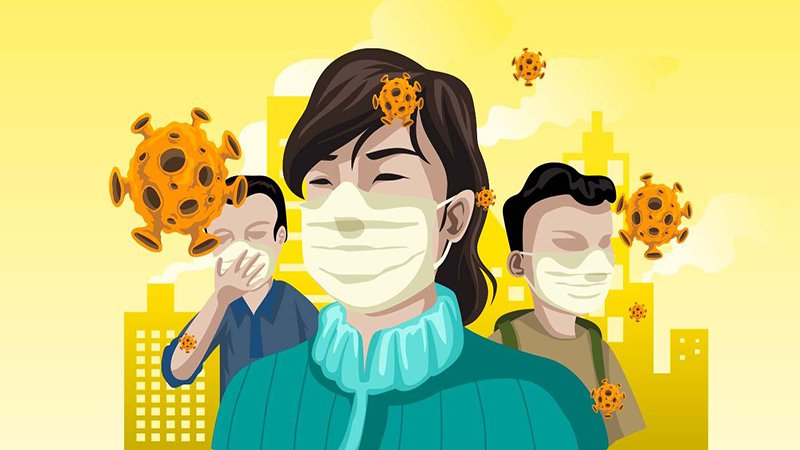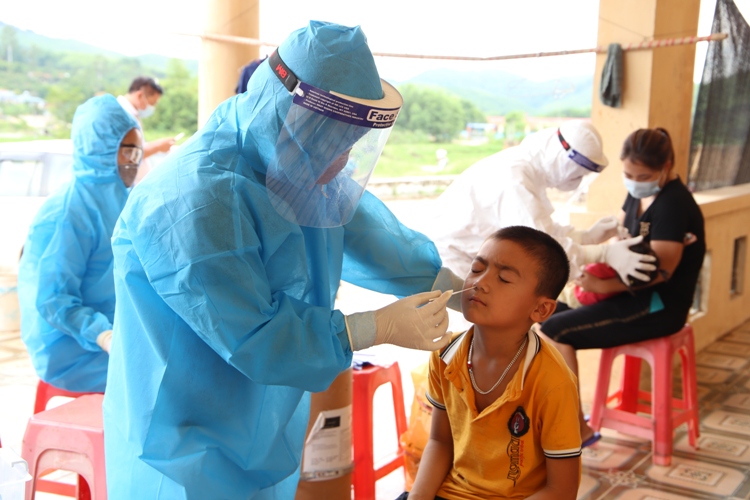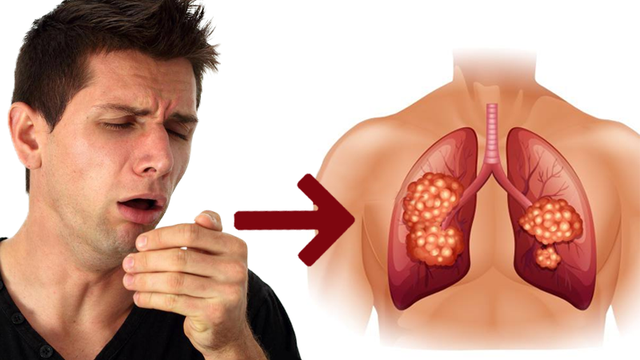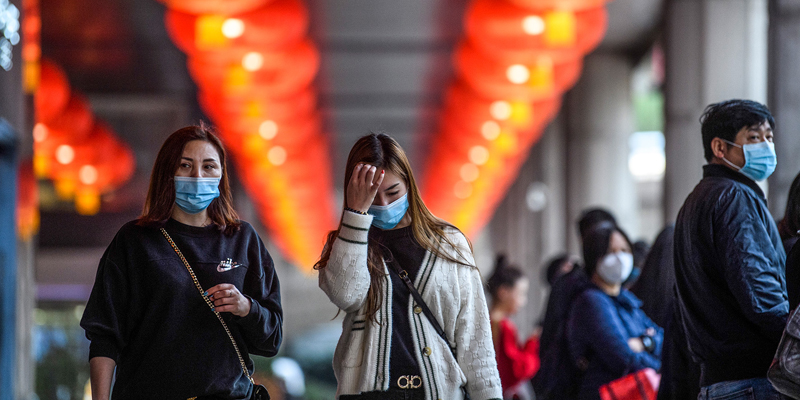Decision 1125/QD-BYT on guidelines for the care of COVID-19 patients in healthcare establishments issued by the Ministry of Health of Vietnam on February 8, 2021.
1. Asymptomatic form
2. Mild cases: acute upper respiratory tract infection
- There are non-specific clinical symptoms such as fever, dry cough, throat pain, stuffy nose, fatigue, headache and muscle pain.
- There are no signs of pneumonia or oxygen deprivation.
3. Moderate cases: pneumonia
- Adult and old pediatric patients: pneumonia (fever, cough, dyspnea, rapid breathing) and no sign of severe pneumonia.
- Young pediatric patients: have cough or dyspnea and rapid breathing (rapid breathing refers to a respiratory rate of ≥ 60 breaths/minute in children under 2 months of age; ≥ 50 breaths/minute in children from 2 to 11 months of age; ≥ 40 breaths/minute in children from 1 to 5 years of age) and no signs of severe pneumonia.
- Interstitial pneumonia or complications is/are detected via lung X-ray, ultrasound or CT scans.
4. Severe cases: severe pneumonia
- Adult and older pediatric patients: have fever or are suspected of respiratory infection, accompanied by any of the following signs: respiratory rate of > 30 breaths/minute, severe dyspnea.
- Young pediatric patients: have cough or dyspnea and at least one of the following signs: cyanosis or SpO2 < 90%; severe respiratory failure (grunting noises when breathing, retractions);
+ Or the child is diagnosed with pneumonia and has any of the following severe signs: inability to drink/nurse; altered level of consciousness (lethargic or comatose); convulsions. Other pneumonia signs such as retractions or rapid breathing may be present (with the abovementioned respiratory rate).
- Diagnosis is made based on clinical signs; complications are detected via lung X-ray.
5. Critical cases
Acute respiratory distress syndrome (ARDS)
- Onset: respiratory symptoms appear or worsen within one week starting from onset of clinical symptoms.
- Lung X-rays, CT scans or ultrasound images: ground-glass opacity in both lungs that is not caused by pleural effusion, lobar atelectasis or lung nodules.
- Pneumochysis is not caused by heart failure or fluid overload. Subjective assessment (heart ultrasound) is needed to exclude pneumochysis caused by hydrostatic pressure if there are no risk factors.
- Hypoxemia in adult patients: classification is done based on PaO2/FiO2 (P/F) ratio and SpO2/FiO2 (S/F) ratio if PaO2 value is unavailable:
- Hypoxemia in pediatric patients: classification is done based on IO or OSI value for patients on invasive ventilation and PaO2/FiO2 or SpO2/FiO2 for patients on CPAP or non-invasive ventilation.
Sepsis
- In adult patients: there are signs of organ dysfunction:
+ Altered level of consciousness: somnolence, stupor, coma
+ Dyspnea or rapid breathing, low oxygen saturation level
+ Fast heart rate, weak pulse, cold extremities, or low blood pressure, livedo reticularis
+ Low urine output or no urine output
+ Laboratory tests show coagulation disorders, thrombocytopenia, acidosis, high lactate level, high bilirubine level, etc.
- Pediatric patients: when sepsis is suspected or confirmed and at least 2 criteria for systemic inflammatory response syndrome (SIRS) are met, one of which must be change to body temperature or abnormal leukocyte count.
Septic shock
- In adult patients: prolonged low blood pressure despite volume resuscitation, use vasoactive drugs to maintain mean arterial pressure (MAP) at ≥65 mmHg and serum lactate levels at >2 mmol/L.
- In pediatric patients: septic shock is confirmed upon the presence of:
+ Low blood pressure.
+ Or 2-3 of the following signs: altered level of consciousness, fast or slow heart rate; or warm vasodilation with bounding pulses; rapid breathing; mottled skin or petechial or purpuric rash; increased lactate; oliguria; hyperthermia or hypothermia.
Other severe-critical complications: lung infarction, stroke, delirium. They require close monitoring, diagnostic testing upon suspicion and suitable treatments.
Currently, there is no specific drug to treat COVID-19. Therefore, people need to seriously take proactive infection prevention measures such as wearing masks, using personal protective equipment in the right situations, environmental surface cleaning, keeping a distance of 2 m to avoid mass gatherings, etc. In particular, strictly follow the directions of state agencies to protect yourself and everyone around you.
- Key word:
- Decision 1125/QD-BYT of Vietnam
 Article table of contents
Article table of contents










.Medium.png)
.Medium.png)
.Medium.png)
.Medium.png)
